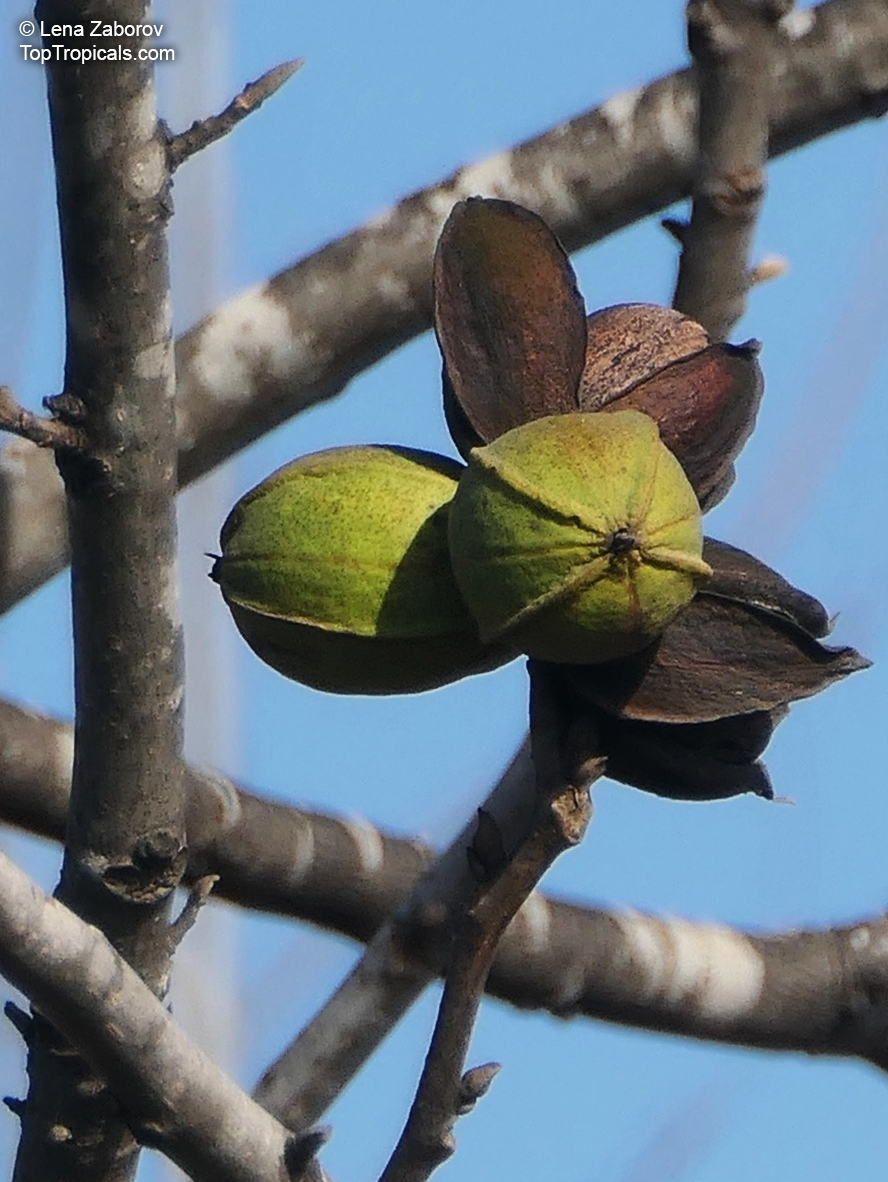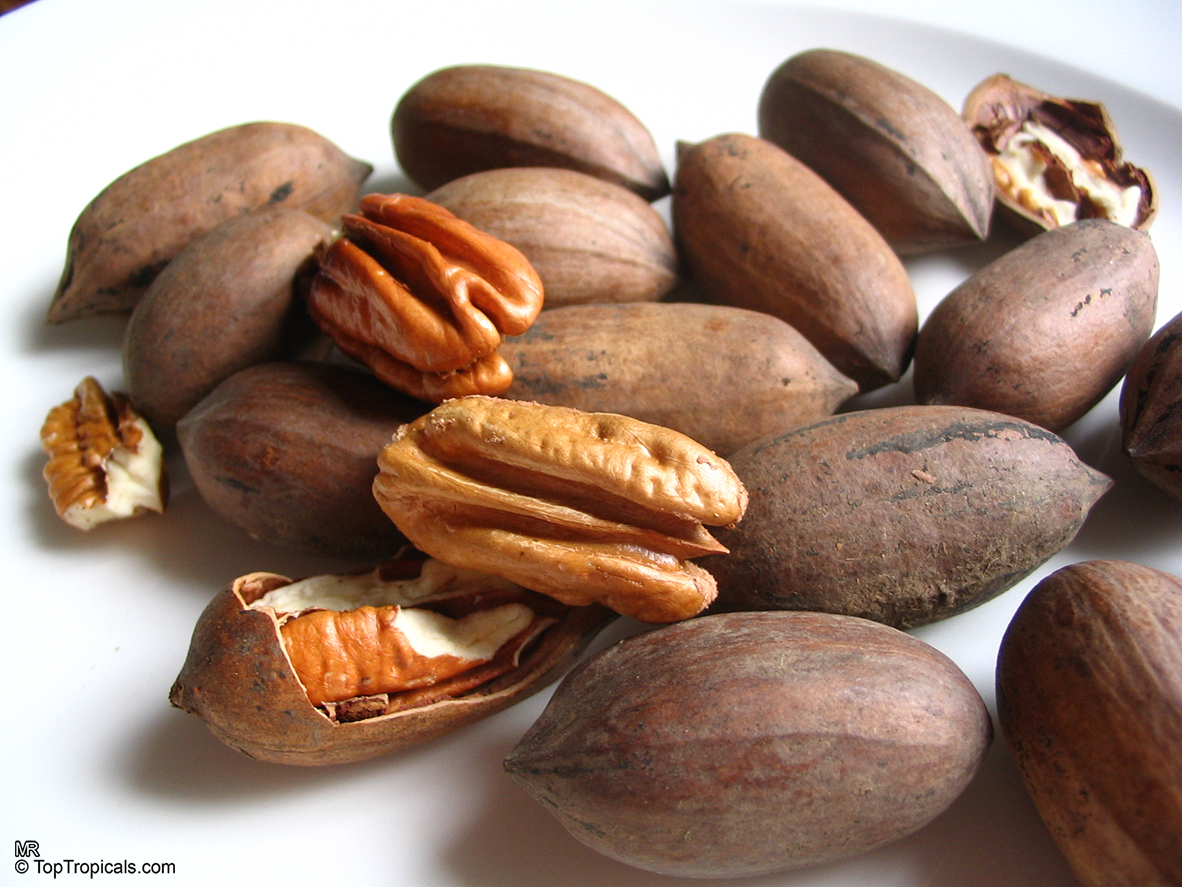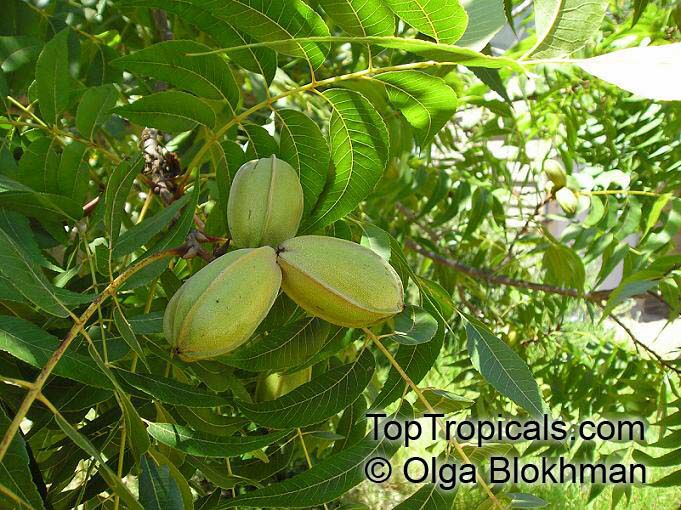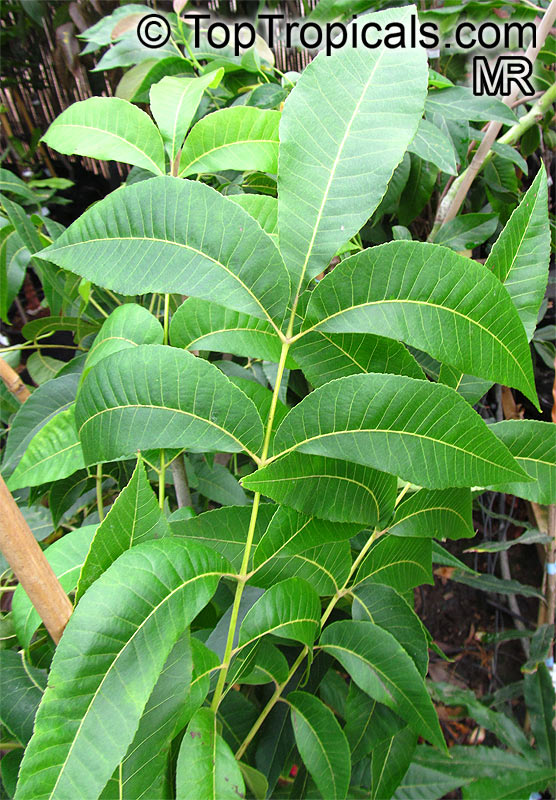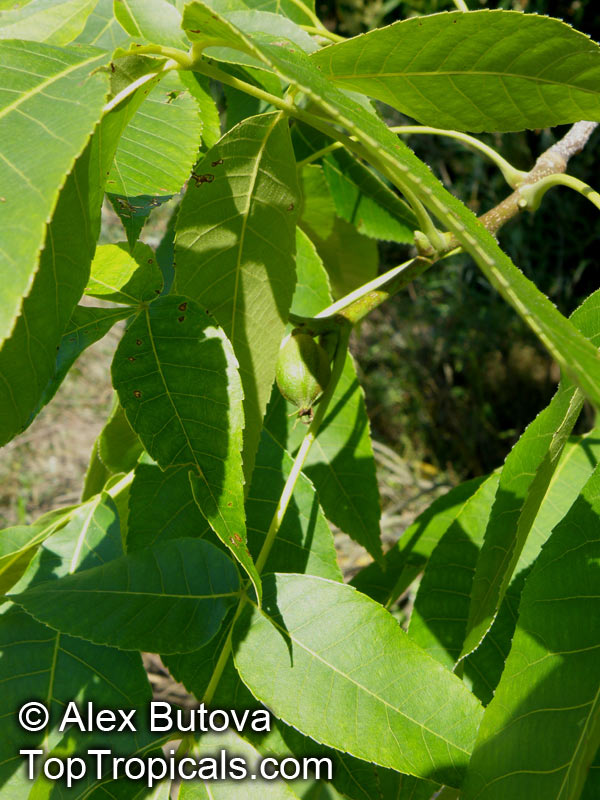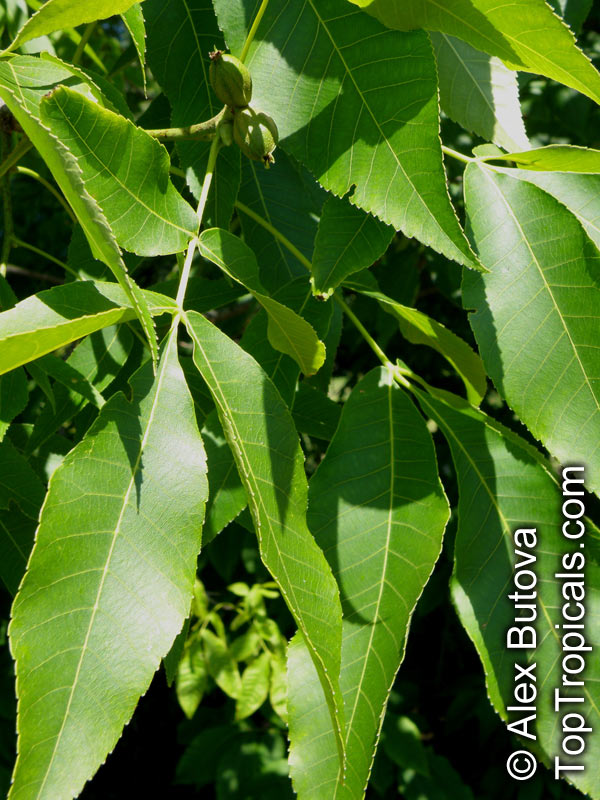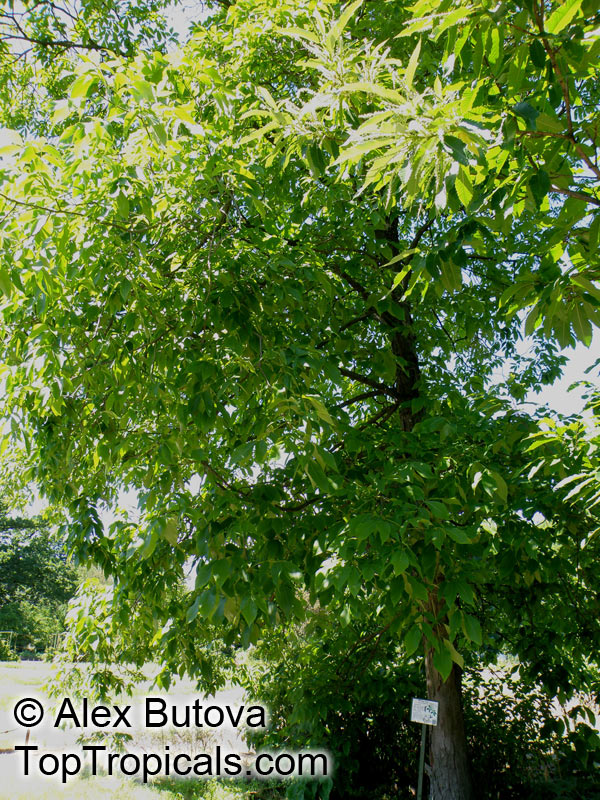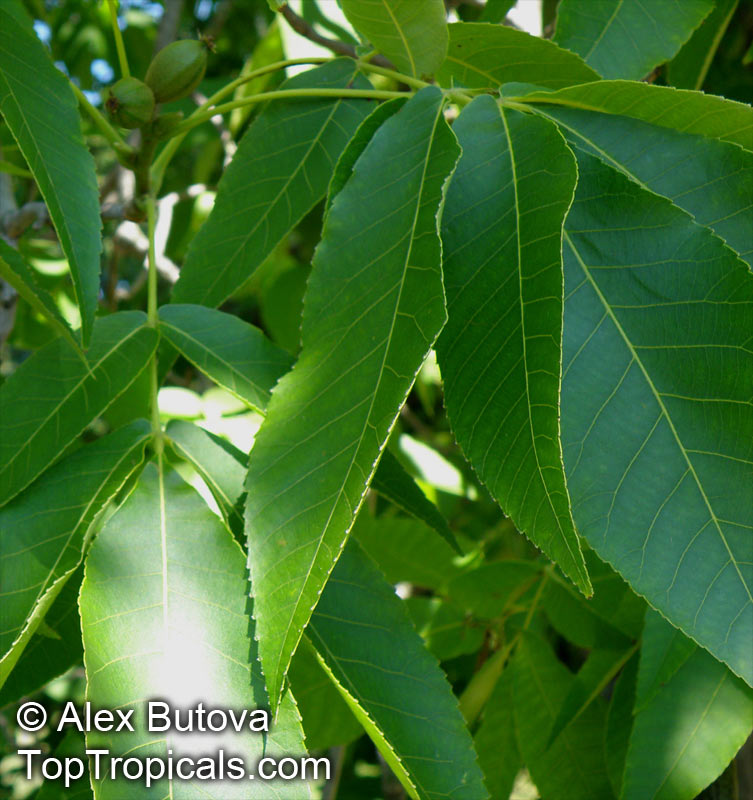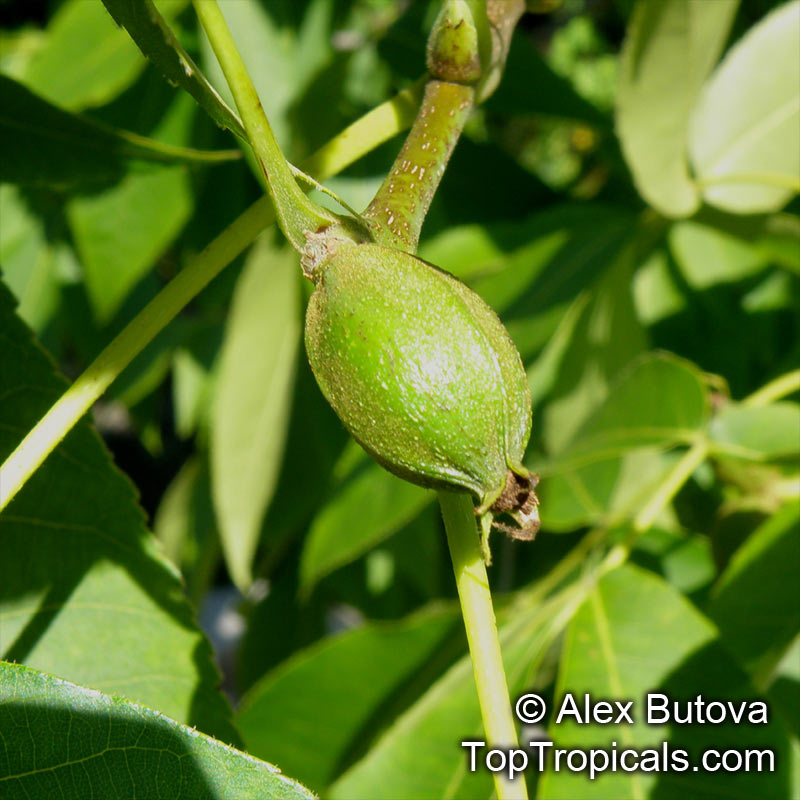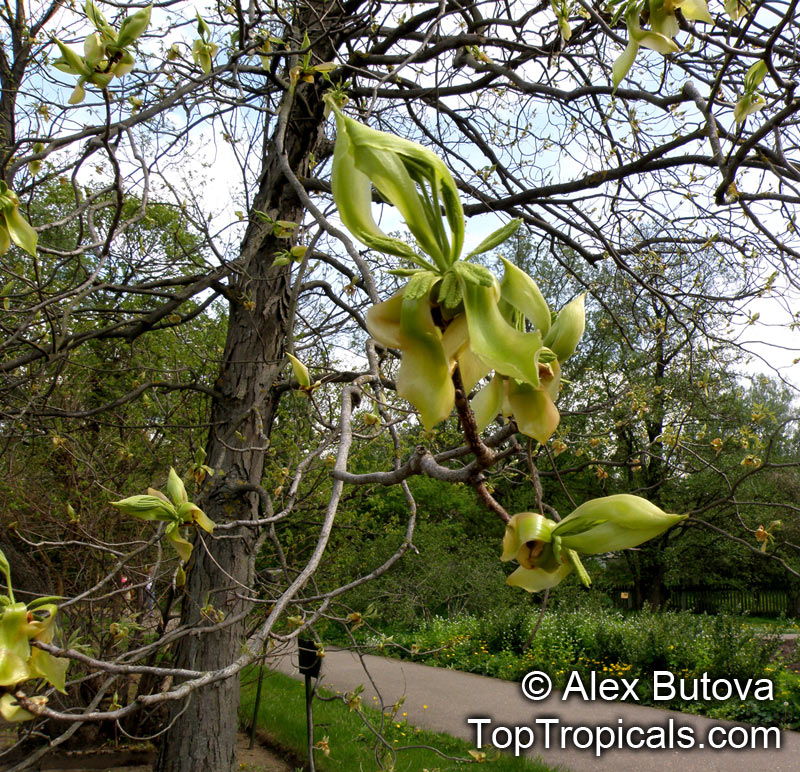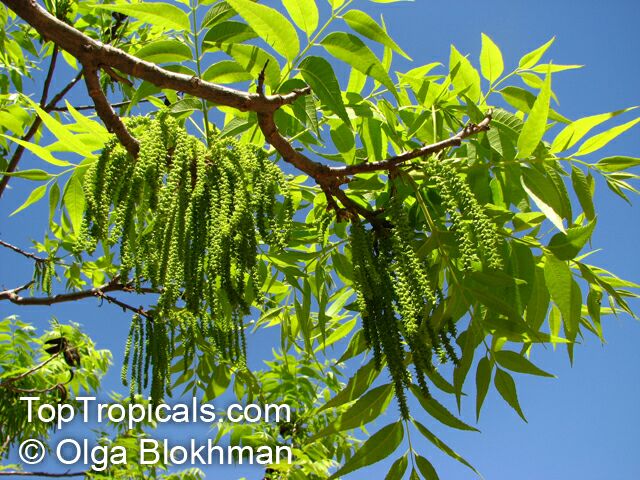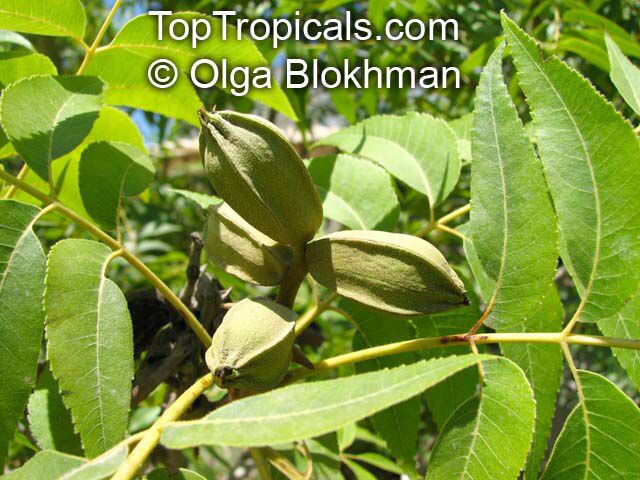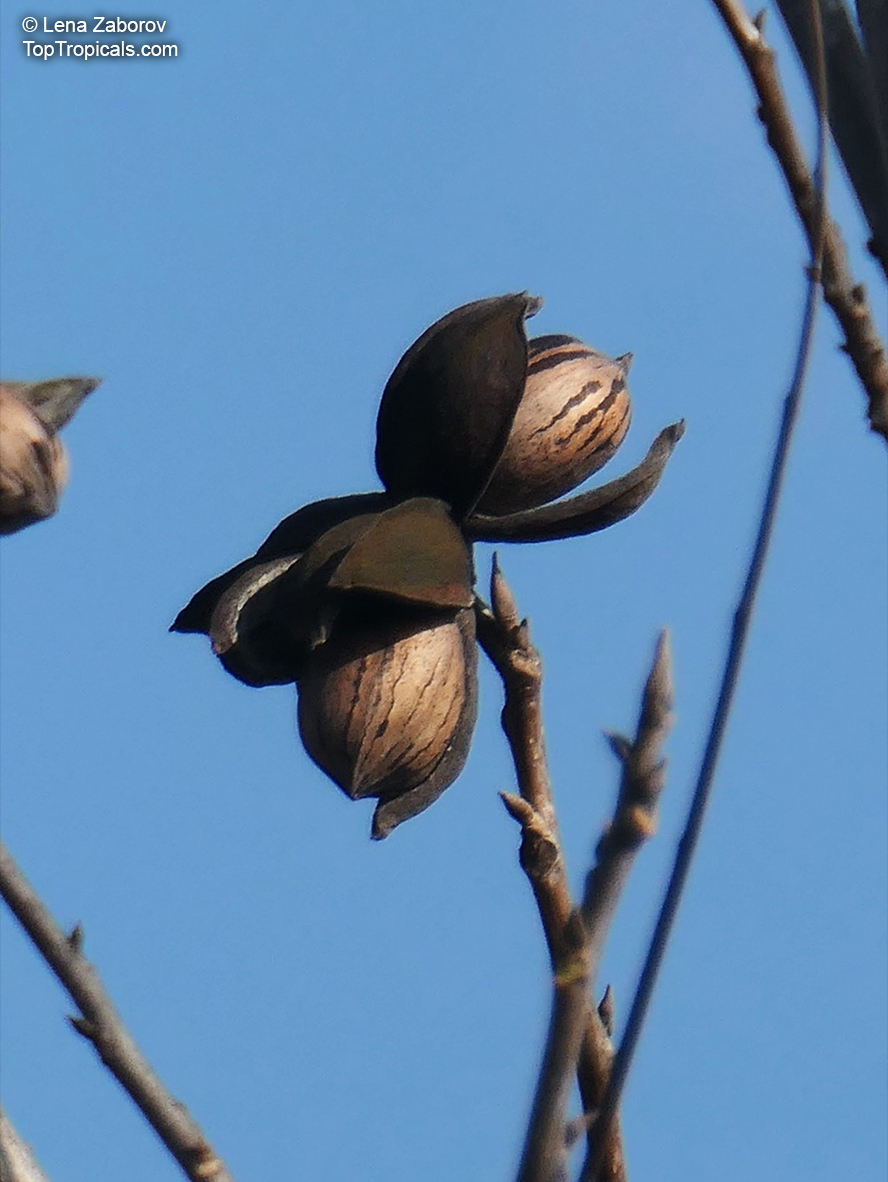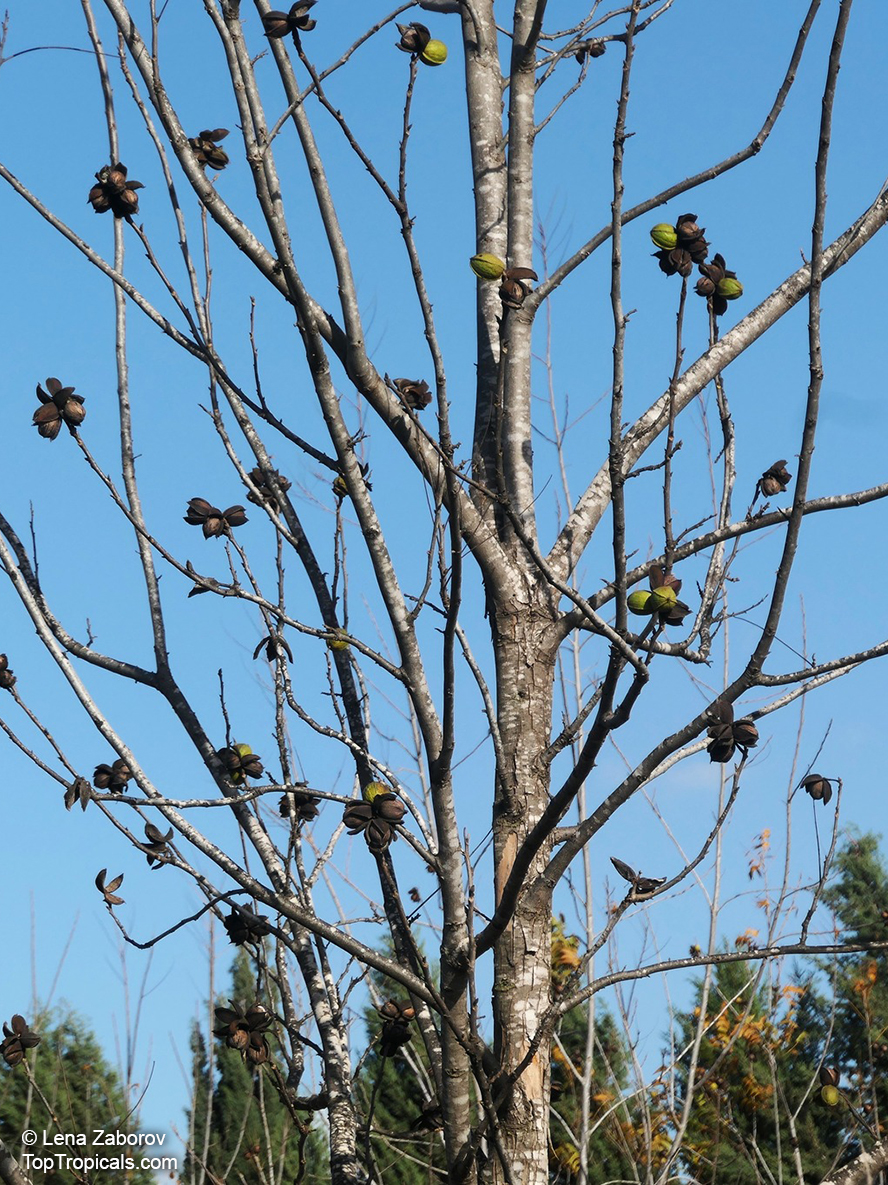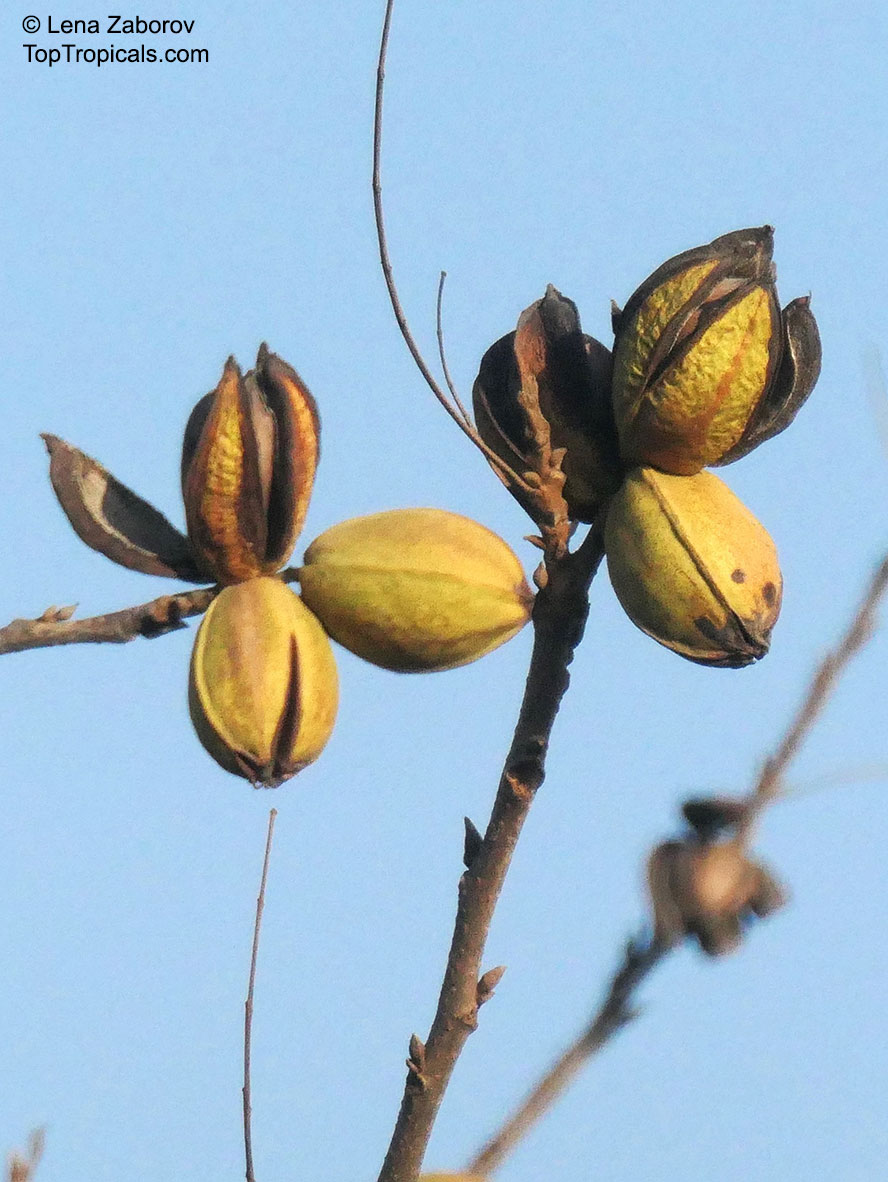Carya illinoinensis, Carya pecan
PecanFamily: Juglandaceae
Origin: Southern and Central United States









The pecan tree (Carya illinoensis) produces the edible nuts known as pecans. A mature pecan tree can produce up to 60 pounds of nuts in a single season.
The pecan is a type of hickory, and its nuts have a rich, buttery flavor. They can be eaten fresh or used in cooking, particularly in sweet desserts but also in some savory dishes. Pecans are a good source of protein and unsaturated fats. The word "pecan" comes from an Algonquian word meaning a nut that requires a stone to crack. The Spaniards brought the pecan to Europe, Asia, and Africa beginning in the 16th century. Pecans are native to the United States, and writing about the pecan tree goes back to the nation's founders. The pecan tree can live for more than 300 years.
Pecans grow primarily in the lower Mississippi Valley, extending from eastern Kansas and central Texas to western Mississippi and western Tennessee, and locally throughout northeastern and central Mexico. The tree prefers a humid climate and well-drained loam soils, although it can grow on heavy textured soils. Pecan seedlings can survive short periods of flooding. Flowering occurs from April through May, and the species is mostly self-incompatible, requiring multiple cultivars for pollination.
The pecan tree is cold hardy in USDA Zones 5-9. In colder regions, pecans can be grown in large containers and brought indoors during the winter months. The container should be large enough for the roots to spread and the tree to grow. During the growing season, the container should be watered thoroughly but not soaked, and fertilized two to three times with a general-purpose fertilizer. In the winter, the tree should be watered sparingly, and the soil allowed to become slightly dry between waterings.
